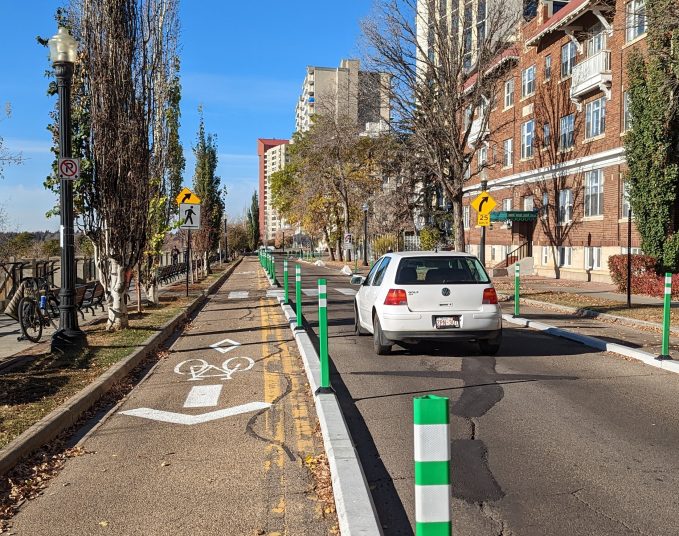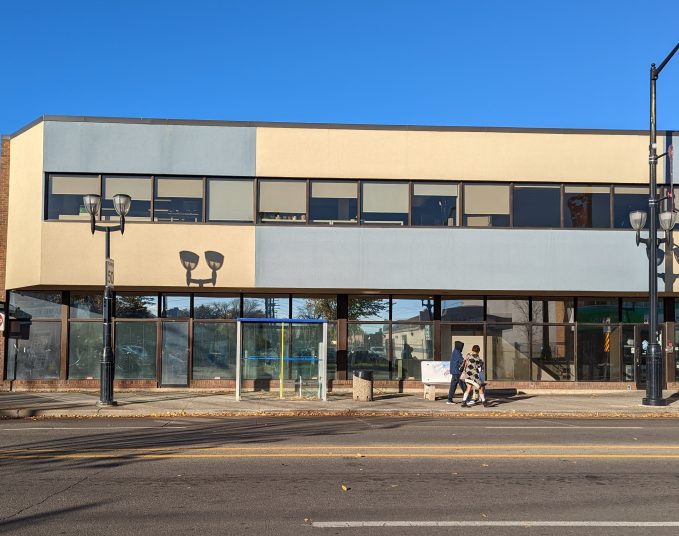Over the last few months, there’s been a surge of renewable energy developments – mostly solar – in and around Edmonton. “I would say there’s definitely momentum across the province and absolutely in our major urban centres like Edmonton,” says Heather MacKenzie, executive director of Solar Alberta. “There are hundreds of installations coming online provincially every month when it comes to rooftop solar and we’re also seeing solar farms take off in a big way across Alberta.”
One of these is EPCOR’s kīsikāw pīsim solar farm, a 51-acre parcel of land owned by Enoch Cree Nation and located in the river valley next to the E.L Smith Water Treatment Plant, in southwest Edmonton. The farm went on-line in mid-September and includes 30,350 solar panels producing half of the power needed to run the plant, which processes 65 per cent of the city’s clean water. It’s estimated that the solar farm will prevent 14,000 tonnes of greenhouse gas emissions each year.
“We're nowhere near our greenhouse-gas allocation to 2050. We'll burn it up by 2037."
Another large solar farm project has been proposed for Sturgeon County, north of Edmonton, by German power company Alpin Sun. The $340-million, 1,200-acre farm, Sol Aurora, would be built next to the AltaLink Heartland Substation in Alberta’s Industrial Heartland, Canada’s largest hydrocarbon processing region. The same company is building a 120-megawatt solar farm at Edmonton International Airport.
When it comes to rooftop solar projects, Edmontonians have been enthusiastically embracing renewable energy. In September, the City of Edmonton’s homeowner rebate program made headlines when it ran out of funds, largely due to public demand. On a commercial level, the City is in the final stages of installing Canada’s largest solar array atop the EXPO Centre in North Edmonton. Completion of the first phase of a $5 million rooftop solar array project is slated for the end of the month. It will include 5,800 solar panels across about 194,000 square feet of rooftop above Halls D through H. A number of other municipal buildings have rooftop solar panels, including Queen Elizabeth Pool, the Meadows Fire Station, Jasper Place Fire Hall, Davies Garage and the Edmonton Convention Centre.
More momentum comes in the form of two 20-year contracts the City of Edmonton has signed with green energy providers to reduce the emissions created from powering civic buildings. The two contracts will prevent 95,000 tonnes of carbon from entering the atmosphere over the next two years.
One contract is with BluEarth Renewables, a Calgary-based company with several solar facilities in southern Alberta. The other is with Ontario’s Capstone Infrastructure Corporation, which will provide electricity from its Wild Rose 2 wind farm, which is under construction in Cypress Country. About 80 per cent of the power will come from wind and 20 per cent from solar, a split that was done “to mitigate the potential price risk between the two technologies,” says Gary Cook, utilities lead with the City of Edmonton’s Urban Planning and Environment department.
It’s a lot of good news, but it’s tempered by the recent publication of the City’s first carbon budget report. As part of the City’s 2019 declaration of a climate emergency, it set greenhouse emissions reduction targets of 35 per cent by 2025, 50 per cent by 2030 (compared to a 2005 baseline), and to be emissions neutral by 2050. “It’s a woeful report,” says Ward Dene city councillor Aaron Paquette. “We’re nowhere near our greenhouse-gas allocation to 2050. We’ll burn it up by 2037.”
Edmonton is hardly alone in this regard. As Mayor Amarjeet Sohi and other leaders attend the United Nations Climate Change Conference (COP27) in Egypt, it’s clear that jurisdictions of every size are missing their targets.
MacKenzie doesn’t think these goals are realistic without regulating emissions. Simply offering financial incentives isn’t enough, she says: “Right now, it’s all carrot and no stick, and it’s just not going to get us there.”
Worker shortages could also hinder the city’s goals, as well as the success of the many solar projects around the province. Like so many sectors, renewable energy is struggling to find the skilled staff they need.
“I think it’s getting harder to keep skilled workers. People are recognizing their value and understanding what they deserve — and they’re ready to find it,” says Jodie Hon, an engineer who serves as Innovation and STEM manager with Iron and Earth, a worker-run nonprofit that helps fossil fuel industry and Indigenous workers succeed in renewable energy. She says greater efforts need to be made to offer fair working conditions and pay, both in the interests of retention and success of individual projects.
Savvy AF. Blunt AF. Edmonton AF.




